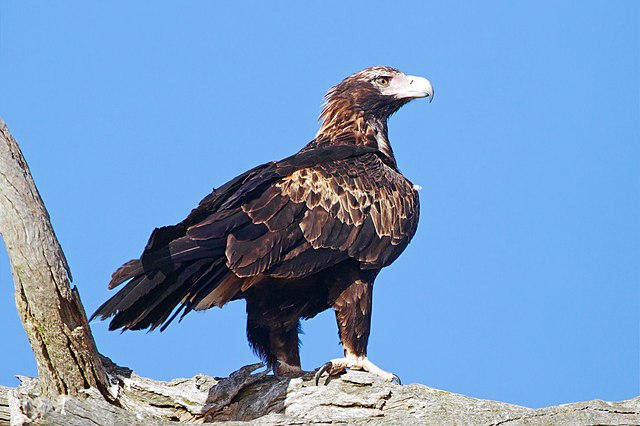The wedge-tailed eagle is the largest bird of prey in the continent of Australia. It is also found in southern New Guinea to the north and is distributed as far south as the state of Tasmania. Adults of the species have long, broad wings, fully feathered legs, an unmistakable wedge-shaped tail, an elongated upper mandible, a strong beak and powerful feet. The wedge-tailed eagle is one of 12 species of large, predominantly dark-coloured booted eagles in the genus Aquila found worldwide. Genetic research has clearly indicated that the wedge-tailed eagle is fairly closely related to other, generally large members of the Aquila genus. A large brown-to-black bird of prey, it has a maximum reported wingspan of 2.84 m and a length of up to 1.06 m.
Wedge-tailed eagle
An adult wedge-tailed eagle at Lake Burrumbeet in flight, notably dark and blackish colour.
A young wedge-tailed eagle perched in Birdsville Track with an unusual amount of pale colour showing due likely to moult.
A. a. fleayi, mobbed by forest ravens in Tasmania
Birds of prey or predatory birds, also known as raptors, are hypercarnivorous bird species that actively hunt and feed on other vertebrates. In addition to speed and strength, these predators have keen eyesight for detecting prey from a distance or during flight, strong feet with sharp talons for grasping or killing prey, and powerful, curved beaks for tearing off flesh. Although predatory birds primarily hunt live prey, many species also scavenge and eat carrion.
Bird of prey
Bald eagle
An obliged point of transit of the migration of the birds of prey is the bottleneck-shaped Strait of Messina, Sicily, here seen from Dinnammare mount, Peloritani.
Male (left) and female (right) red-footed falcons








